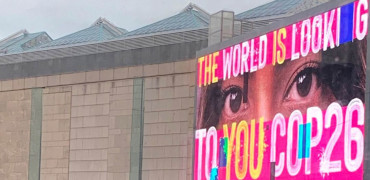We are living in the decade where we may finally run out of time to sort out the climate crisis and the overwhelming consensus now, is that we have to achieve net zero in the near future to have any chance of reversing the devastating effects that our current way of life is having on our planet.
In July 2019, the Rt Hon Chris Skidmore MP, signed a legally binding commitment to reduce carbon emissions to net zero by 2050, which was an increase from the original 80% of 1990 levels.
So, all roads now lead to net zero and corporations, businesses, high finance and consumers are all backing calls for significant carbon reduction in the next decade.
Even governments are recognising that something needs to be done, although as COP26 clearly demonstrates, there isn’t always a consensus on the way to achieve this.
For construction though, this does mean changes to existing regulations and new legislation to drive and accelerate the move to zero carbon.
Carbon offset is not the answer. We also need to drastically reduce energy consumption or usage
The road to net zero
But what do we actually mean by net zero?
It’s generally agreed that the key components of a net zero carbon building should be;
Reduced energy demand
o Optimizing the efficiency of the building fabric
Reduced embodied carbon
o Driving down the carbon impacts related to product and construction stage
This is the UKGBC definition of embodied carbon - Embodied carbon is the total greenhouse gas (GHG) emissions (often simplified to “carbon”) generated to produce a built asset. This includes emissions caused by extraction, manufacture/processing, transportation and assembly of every product and element in an asset. In some cases, (depending on the boundary of an assessment), it may also include the maintenance, replacement, deconstruction, disposal and end-of-life aspects of the materials and systems that make up the asset. It excludes operational emissions of the asset.
Bridging the “Performance Gap”
o In-use performance vs modelled performance
Low carbon energy supply
o Using low carbon heat, hot water and electricity
At Mitsubishi Electric, we have long advocated what we call a ‘Lean, Mean, Green’ approach which starts by looking at how you can reduce overall energy use; then focuses on how to use any energy in the most efficient ways possible; then calls for that energy to come from sustainable sources and to be used by renewable and sustainable equipment.
Carbon offset is not the answer
If we look at a route map that maintains our current energy consumption and we use carbon offset and capture, whilst simultaneously increasing the amount of renewable energy produced, we would need to capture 5,635 million tonnes of CO2 by 2050.
It’s worth reminding ourselves that one UK Native broadleaf tree off-sets about 1 tonne of CO2 throughout its 100-year lifespan.
It’s also worth pointing out that at the moment we capture about 40 million tonnes of CO2 each year (Taken from global status of CCS 2020 report produced by the Global CCS institute).
The difference between 40m and 5,635m is a very big gap to close so it is pretty obvious that we also need to drastically reduce energy consumption or usage.
Legislative drivers
Recommendations from CIBSE (Chartered Institute of Building Service Engineers) states that they “consider that all new buildings should be net zero carbon in operation from 2030 (including all energy uses) and to allow this, all new buildings should be designed as net zero carbon from 2025.
The London Plan already requires major new developments to demonstrate net zero and the Manchester Plan is about to be launched demanding net zero in new construction by 2028.
In addition, we need to be mindful of MEES (Minimum Energy Efficiency Standards) which the government has set on an increasingly tough future trajectory.
This calls for all non-domestic buildings to achieve and EPC of ‘B’ by 2030 and is estimated to affect around 85% of the non-domestic rented stock, although there are some exemptions.
There are around 1,656,000 non-domestic buildings and approximately 85% of these are currently below EPC B, so there is a lot of work to do with these 1.4 million buildings by the end of the current decade.
That includes offices, education, health, shops, hospitality, community and leisure centres as well as factories and warehousing.
However, as this video made by my colleague Russell Jones shows, there are already ways that any business and any building can improve their EPC rating.
Much to be done
There is already a lot of potential to achieve the carbon reduction we need and there are solutions available right now in the form of modern HVAC equipment that can make a serious contribution to carbon reduction in buildings of all types.
We’ve created detailed presentations on how energy demand can be reduced nationally and in individual buildings and I will write about that in a future blog.
I’ll also look at RIBA performance targets, the growing importance of ‘embodied carbon’ and, most importantly, the performance gap we often see between the modelling of a building’s likely performance and the real-time operational use of equipment such as HVAC.
CIBSE has called for the mandatory disclosure of building energy performance starting with the commercial office sector and we are likely to see this pressure on real-time performance grow as we progress through the decade.
We are now on the road to zero carbon and we must remember that it won’t be achieved overnight and it won’t be achieved in isolation. We all have a part to play and everyone is at a different stage of the journey.
But there is also the expertise and experience in our industry to really make a difference and we have the skills and the technology that means we can make a start right now.
Chris Newman is Zero Carbon Design Team Manager at Mitsubishi Electric


